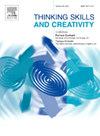Creative partnerships with generative AI. Possibilities for education and beyond
IF 3.7
2区 教育学
Q1 Social Sciences
引用次数: 0
Abstract
The impact of generative artificial intelligence (AI) on creative production in industry and education is just beginning to be experienced and understood. This impact is likely to accelerate and become even more significant as the computational potential of generative AI grows through training on more diverse and more extensive language models and data sets. Emerging research in this new field suggests that previous models of understanding the interactions between machine and human may no longer be sufficient in a world of generative AI. The significant question is how emerging generative AI technologies will relate to and be a part of human creativity and creative outputs. In this article, we adopt a posthuman stance and conceive of creative output involving generative AI and humans in terms of a yet-to-be-fully-realised and emergent relationship that will likely become more integrated and complex. To investigate and experiment with this relational notion, each of us (as part of an autoethnographic approach) developed a creative output using ChatGPT: a poem and a multimodal narrative. We then employed the idea of alterity relations from the American philosopher of technology, Don Ihde, to conceive of the possibilities and limitations in working relationally and productively with generative AI. As two academics working in teacher education, we applied our learning from this exploration to possibilities in educational contexts. In this article, we offer several important implications and provocations for practitioners, researchers, educators and policymakers, not only in terms of practical concerns but also for rethinking the nature of the creative output.
求助全文
约1分钟内获得全文
求助全文
来源期刊

Thinking Skills and Creativity
EDUCATION & EDUCATIONAL RESEARCH-
CiteScore
6.40
自引率
16.20%
发文量
172
审稿时长
76 days
期刊介绍:
Thinking Skills and Creativity is a new journal providing a peer-reviewed forum for communication and debate for the community of researchers interested in teaching for thinking and creativity. Papers may represent a variety of theoretical perspectives and methodological approaches and may relate to any age level in a diversity of settings: formal and informal, education and work-based.
 求助内容:
求助内容: 应助结果提醒方式:
应助结果提醒方式:


